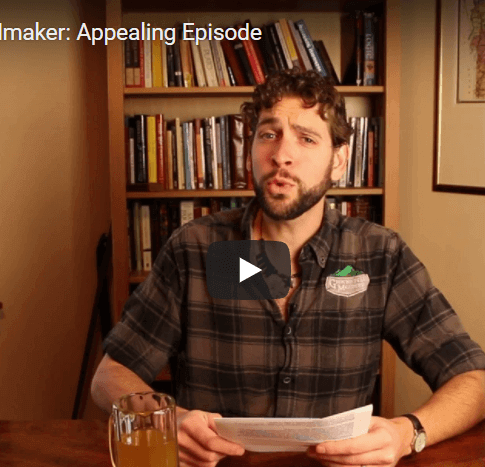In which Ricky the Meadmaker answers questions about “nutritionizing” mead, how to use mead as its own starter, using reverse osmosis for brewing water, making Nordic Farmhouse at home, his choice of yeast, and more!
Hello, Meadiacs. I live in America, where we had an election this week. I want to acknowledge that some of you woke up this week devastated and some of you woke up ebullient. All of you are still welcome to come drink with me. My mead hall is a place for everyone. I have survived the beginning and the end of the Ottoman Empire. This has not shaken me.
Welcome to Ask the Meadmaker, where I, Ricky the Meadmaker, answer your questions about mead making, mead drinking, mead brewing, and really any question you're willing to send to me.
Our first question this week comes from Phillip, who used a very made-up word that I absolutely love. He wanted to know if he "nutritionizes" his mead early on, if it'll make for a really fast fermentation. He put a little question mark next to "nutritionize." He seems to know that this probably isn't a word and it's definitely not, but it is now. From now on, I'm referring to nutrient additions and nutrient loading as "nutritionizing." I love it. Anyway, the answer is yes. A heavy dose of nutrient is a huge part of having a quick, healthy fermentation. You wanted to know how long my fermentations last? We go honey to glass in about three weeks here.
This is neat. We got a question on YouTube from someone named Cath Feined. I get what you did there. If mead is its own starter, do we collect it pre- or post-fermentation then add the yeast and nutrient? I was about to answer that question on this episode. But one of you answered. Jean wrote a response, which I think is super cool and spot-on. If you are brewing in buckets, the first time you rack the mead, you can take the yeast and what's left of the mead from the bottom of your bucket and use it to brew more mead. You can also make yogurt by adding yogurt to milk and you can add that to more milk and make more yogurt. It's like an infinite cycle of fermenting stuff till you have some contamination and have to buy new yeast or bacteria again. Jean, I couldn't have said it better myself. Go home, make yogurt.
More questions from Lee. Lee relistened to a podcast on which I spoke about my Nordic farmhouse. And Lee was enamored of it, which I think is great. I'm enamored of it myself. And the question was how to make it at home. In some ways, it's the easiest of my meads to make and the hardest to replicate. What I mean is: get some cranberry juice, get some raw honey, mix it in the right proportions and just let it go. Let it ferment. That's how we make Nordic farmhouse. But the problem is, you don't have the same cranberries I have, nor do you have the same honey, which means your Nordic farmhouse is by definition going to be different from mine since most of the characteristics come from the wild yeast.
Lee's next question is about reverse osmosis, reverse osmosis for water for brewing. Now, you want some minerality in any water source for any fermented beverage. So, traditionally, RO is not highly recommended. But in beer, the grain has a lot going on. It has a lot of minerals and if you're making a Pilsner, RO water is not a bad idea. However, mead really needs minerals because honey does not have a ton of them. So, it is not ideal to use reverse osmosis for the water treatment unless you're going to back-add minerals to your starting water.
Our last question this week comes from Scott, who was re-watching a talk I gave one time. And Scott wanted to know if I picked wyeast's mead strain because I thought it would develop extraordinary pH tolerance, or if that was just a stroke of luck. I'm going tell you Scott. Like in most things in the history of brewing, that was 100% pure luck, and I was happy to take credit for it.
That's our last question this week. I just need to send it over to Ricky with our Word of the Week. Ricky.
Thank you, Ricky. You know it's Fall in Vermont if we're both wearing flannel. This week's word is refermentation. Now, refermentation is a tricky thing because if something starts fermenting again because, say, you put fruit into your mead after primary fermentation is done, it's technically refermentation, but usually called secondary fermentation. But secondary fermentation just sometimes means resting and no active yeast activity. Usually, however, the term refermentation is used when you don't want fermentation. Take for example, someone who has made a mead that they want to be still. They put it in bottles and the yeast starts working again on the residual sugar and the corks start popping out. That is refermentation. But you can use it in a variety of ways, which makes it a little confusing.
Either way, it's our Word of the Week and the end of our show, keep sending your questions and I'll get to them as soon as possible. Cheers.




